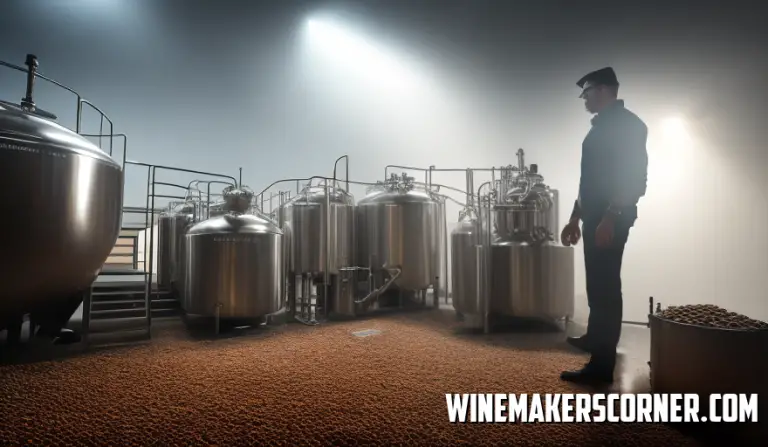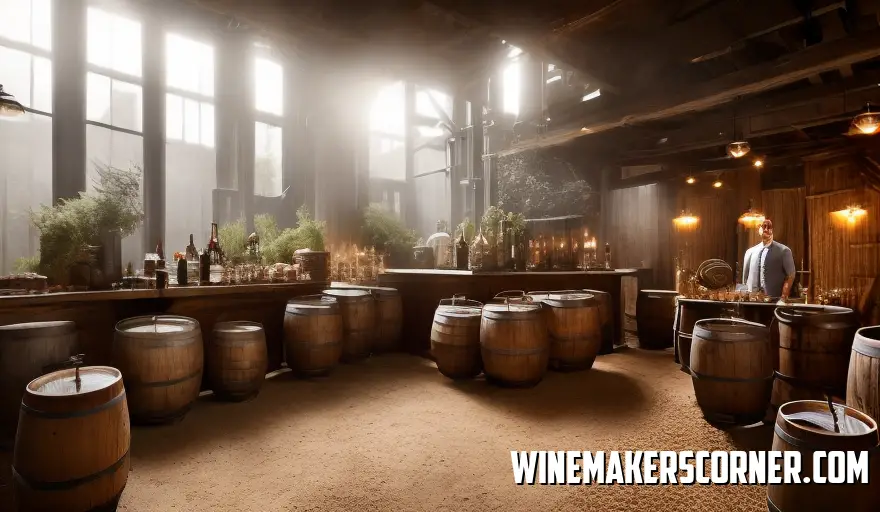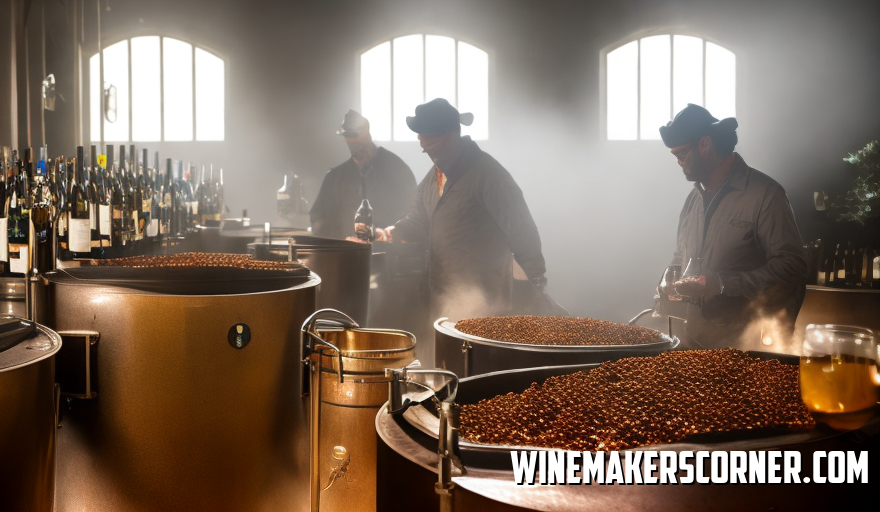Picture the robust flavor of your morning coffee melding with the creamy, velvety goodness of a freshly brewed beer. Can you imagine the combination? Well get ready beer aficionados! We’re about to embark on an expedition that will take us deep into the world of brewing beer with coffee. This isn’t your instructional manual; we’re exploring uncharted territories where hops and beans intersect. So grab your mug or pint glass and lets dive headfirst into this aromatic adventure!
Understanding the Basics of Brewing Beer
Did you know that brewing beer with coffee is actually a thing? Its gaining popularity in the world of craft brewing. Its not as simple as just pouring a cup of coffee into your beer. Understanding the fundamentals of beer brewing is essential.
Brewing beer is an art that involves four ingredients; water, malted barley, hops and yeast. Each ingredient plays a role in determining the flavor and characteristics of the final brew.
When you introduce coffee into this mix things get more interesting. The type of coffee bean used can have an impact on the taste. Dark roasts bring out a bitterness that pairs well with stout beers while lighter roasts can add fruity or acidic notes that complement lighter beers.
The timing of adding coffee during the brewing process also matters! Adding it during mashing can create undertones while adding it during boiling will give more pronounced flavors.
The yeast strain chosen affects how the coffee flavors come through in the finished product. Some yeasts enhance the elements of coffee while others bring out its fruity side.
In summary brewing beer, with coffee requires precision and creativity— to making a good espresso or cappuccino! But don’t be discouraged; every great brewer was once a beginner too.
The Role of Coffee in Beer Brewing
Brewing beer with coffee? Sounds a bit strange doesn’t it? Well believe it or not its actually becoming quite popular in the world of craft beer. Coffee is no longer limited to just your morning pick me up.
Lets delve into the role of coffee when it comes to brewing beer. It’s not as straightforward as pouring a pot of coffee into a big vat of beer. The process is intricate. Requires careful attention to ensure the flavors are well balanced.
Choosing the coffee beans is crucial. They need to complement the flavor profile of the beer without overpowering it. Dark roasts can bring out flavors while lighter roasts offer more subtle notes. It’s about experimenting and finding that perfect combination.
The brewing technique is also quite unique. Brewers often steep coffee grounds in water, before adding them to the brew to how cold brew coffee is made. This method allows for extracting flavors from the beans without introducing any bitterness.
Lets not forget about timing – when you add the coffee during brewing makes a difference! Adding it early may result in losing its rich flavor whereas adding it too late could lead to an overpowering taste.
The end result? A beautiful fusion of two beverages – beer and coffee! These beers provide craft enthusiasts with a new level of flavor and an exciting alternative to explore.
It’s truly fascinating how brewers have creatively incorporated coffee into their recipes offering consumers taste experiences that go beyond traditional boundaries.
Choosing the Right Coffee Beans for Your Brew
Choosing the coffee beans is crucial when it comes to achieving the best flavor for your brew. It’s a step in incorporating coffee into beer brewing. The type of bean its origin and the roast level all play roles in this process.
Firstly lets consider the different types of beans available. Arabica and Robusta are two varieties you can choose from. Arabica offers an more intricate flavor profile while Robusta has a stronger and more intense taste but packs more caffeine content. Your preference should align with your taste buds.
Moving on to the origin of the beans it’s important to note that where they are grown greatly impacts their taste. Colombian beans are renowned for their balanced flavor with hints of nuttiness while Ethiopian beans offer fruity and wine like flavors. If you prefer full bodied brews Sumatran beans would be an excellent choice.
The roast level is another factor to consider. Light roasts preserve the flavors derived from their origin but can introduce some bitterness when used in beer brewing due to higher acidity levels. On the hand dark roasts provide a smoother finish with less acidity but need to be used judiciously so as not to overpower other ingredients in your beer.
Freshness also plays a role, in your coffee selection process. Coffee loses its qualities over time so its always advisable to opt for freshly roasted beans whenever possible.
Lastly grind size influences how quickly flavors are extracted during brewing which ultimately affects the taste profile of your beer coffee blend.
Discovering the coffee bean is more of an exploratory adventure, driven by your individual tastes and inventive skills as a brewer.
The Process of Adding Coffee to Beer
The realm of beer brewing is vast filled with creativity and innovation. One intriguing innovation gaining popularity is the infusion of coffee into beer. Although it may seem unconventional lets explore this process.
To begin with lets discuss the reason behind using coffee. Similar to beer coffee boasts a flavor profile that ranges from fruity and chocolaty to nutty or even floral. These flavors can beautifully complement the maltiness of beer.
Selecting the coffee is crucial in this process. Dark roasts offer flavors and are commonly used in stouts and porters. On the hand light roasts with higher acidity pair well with lighter beers such as lagers or pilsners.
The brewing method also matters! Cold brew coffee is often preferred due, to its flavor profile and reduced acidity levels. This method involves steeping coffee grounds in water for an extended period.
Adding the coffee to the beer requires timing. The commonly used approach is adding cold brewed coffee during secondary fermentation ensuring a seamless integration of flavors without overpowering the taste of the beer itself.
However trial and error also play a role! Some brewers opt for adding shots directly into each bottle before sealing them up. Contributing to an intense burst of flavor!
Ultimately it’s about finding the right balance. You need to strike a harmony between the bitterness, sweetness and acidity that both beer and coffee bring to the table.
In essence brewing beer with coffee is not, about combining two drinks. It’s an art form that creates a fusion of flavors that delight your taste buds. So as you indulge in a coffee infused brew time appreciate the craftsmanship behind every sip.
Balancing the Flavors: Coffee and Hops
Crafting beer with the addition of coffee is an art form. It involves finding the balance between the bold and robust flavors of coffee and the aromatic bitterness provided by hops. This equilibrium is crucial in producing a brew that stands out as both distinct and enjoyable.
While incorporating coffee into beers is not a concept it has been gaining popularity among aficionados of craft beer. The challenge lies in striking the right balance. Much coffee can overpower the hoppy bitterness that defines beer while an excess of hops can drown out the delightful richness of coffee flavor.
An essential first step is understanding your ingredients. Coffee brings depth to beer with its roasted flavors particularly enhancing stouts and porters. However when used excessively in beers it can become overwhelming.
Hops contribute their bitterness and aroma to beer with different strains offering unique flavor profiles encompassing citrusy, floral or piney undertones. The choice of hops significantly influences the character of your brew.
The brewing process itself demands precision. Brewmasters must carefully regulate when and how much coffee to incorporate during brewing to ensure it harmoniously complements than overpowering the hoppy base.
It’s crucial to remember that brewing is essentially an experiment! It entails exploring combinations of coffee beans and hop varieties until you discover that perfect harmony, between flavors.
To sum up when it comes to brewing coffee infused beer it requires a grasp of the unique qualities of both ingredients. Additionally it entails a willingness to explore combinations until you achieve the perfect harmony, between these two bold flavors.
Experimenting with Different Types of Beers and Coffees
Step into the realm of coffee infused beer, where two cherished beverages, beer and coffee intertwine to create a delightful concoction that is both invigorating and refreshing. The magic lies in the art of experimentation.
Like blank canvases awaiting an artists brushstrokes different types of beers offer boundless opportunities for creativity when it comes to incorporating coffee. Whether its ales, stouts or porters each beer possesses distinct characteristics that can be enhanced or balanced by the perfect choice of coffee.
Now lets delve into the captivating world of coffee beans. From roasts to dark roasts and from fruity Ethiopian blends to rich Colombian coffees – each imparts its own unique flavors that can significantly transform your brews profile.
Firstly consider your beer base carefully. Is it a stout? Its deep and robust flavor could benefit from the acidity of a light roast coffee to cut through its richness.. Perhaps you’re working with an IPA? Its hoppy bitterness might harmonize wonderfully with the flavor profile offered by a medium roast.
Timing plays a role in this alchemical brewing endeavor. When should you add the coffee? Should it be during boiling stages or during fermentation? Maybe even at bottling time? Each stage offers outcomes in terms of taste and aroma.
Lastly lets ponder over the merits of brew, versus hot brewed coffee additions. Which one will lend its charm to your creation?
When it comes to brewing coffee cold brew usually gives a taste while hot brew tends to bring out more acidity and bitterness. It’s another aspect to consider when deciding which method you prefer.
The key here is to experiment and mix types of beers and coffees until you discover your ideal combination. The process may take some time. Always remember that, in the delightful realm of craft brewing each step is a flavorful adventure!
Troubleshooting Common Issues in Coffee-Infused Beers.
Brewing beer with coffee is like creating a masterpiece blending two flavors in a delicate manner. However like any art form challenges may arise. Lets troubleshoot some problems.
Firstly lets address the issue of bitterness. This is a concern for many brewers. Sometimes coffee infused beers can have an overpowering taste. This typically occurs when the coffee is steeped for long or at too high of a temperature during the brewing process.
What’s the solution? Adjusting your time and temperature is key. Try steeping the coffee grounds at temperatures for shorter periods of time. Experiment until you find that balance between bitterness and flavor.
Moving on to aroma. You want your beer to have that smell of rich coffee but it seems to be falling short of expectations? The problem might lie in the type of coffee beans used or when they are added during brewing.
Consider using roasted beans to maximize the aromatic impact.. Remember timing plays a crucial role! Adding the coffee later in the brewing process can help preserve its compounds.
Lastly lets tackle inconsistency issues. When one batch tastes different from another even though you followed all instructions precisely! This could be attributed to variations, in your choice of coffee beans or their roast levels.
To ensure consistency in each batch make sure you use the kind of beans and roast level every time. It’s an idea to source your beans from a single supplier who can consistently provide high quality products.
Keep in mind that brewing beer with coffee requires time and experimentation. Don’t get discouraged by these challenges; they are part of every brewers journey toward achieving that perfect pint!
Now that we’ve discussed these obstacles you’re on your way to becoming an expert, in this brewing technique! Enjoy the brewing process and cheers to your success!




